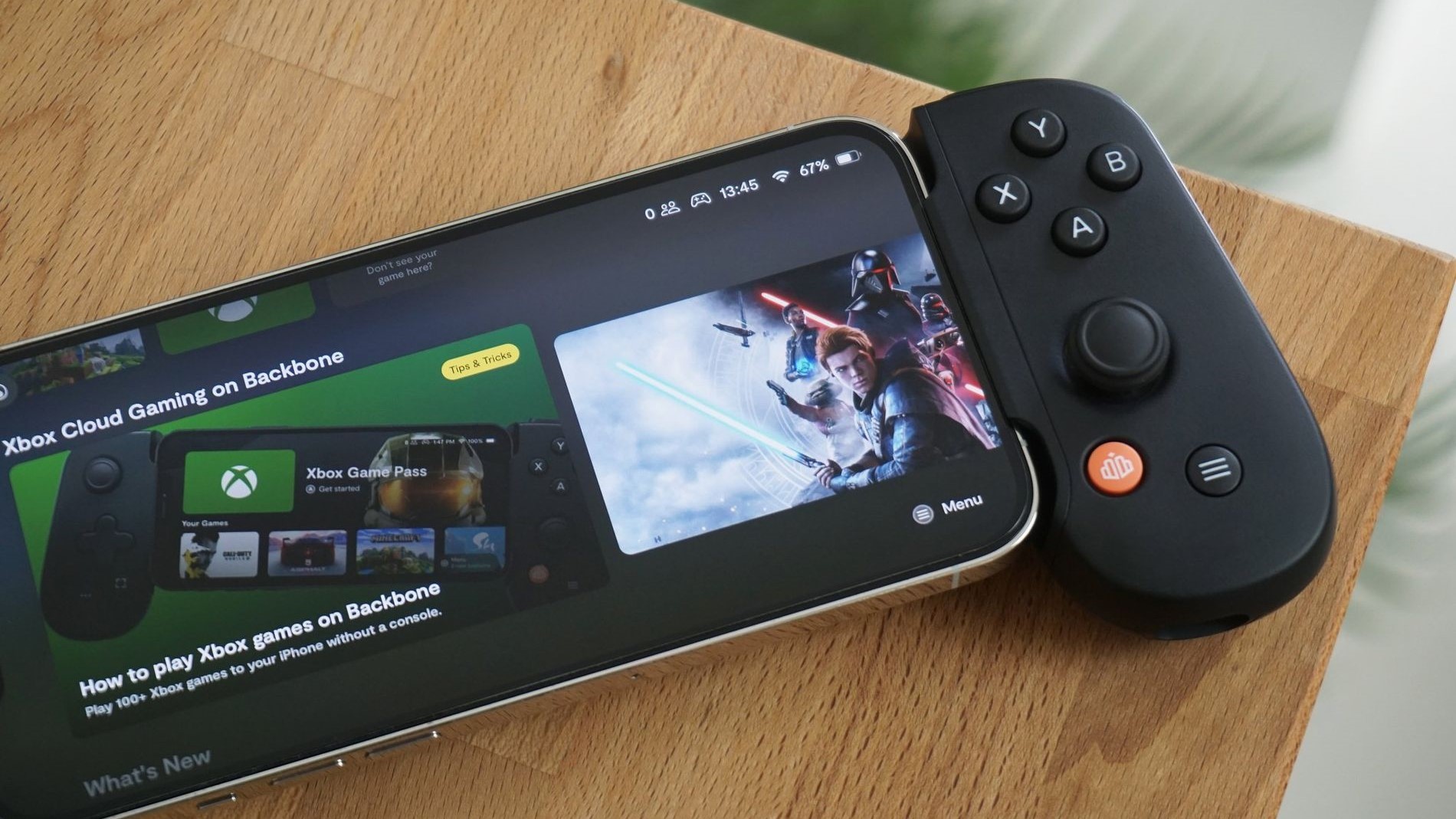12 days of tech tips: Use Windows 10 virtual desktops to stay organized
The holidays are wrapping up, and the New Year is here. If being more productive in 2018 is on your list of resolutions, here's one small way you can work toward that goal with Windows 10.
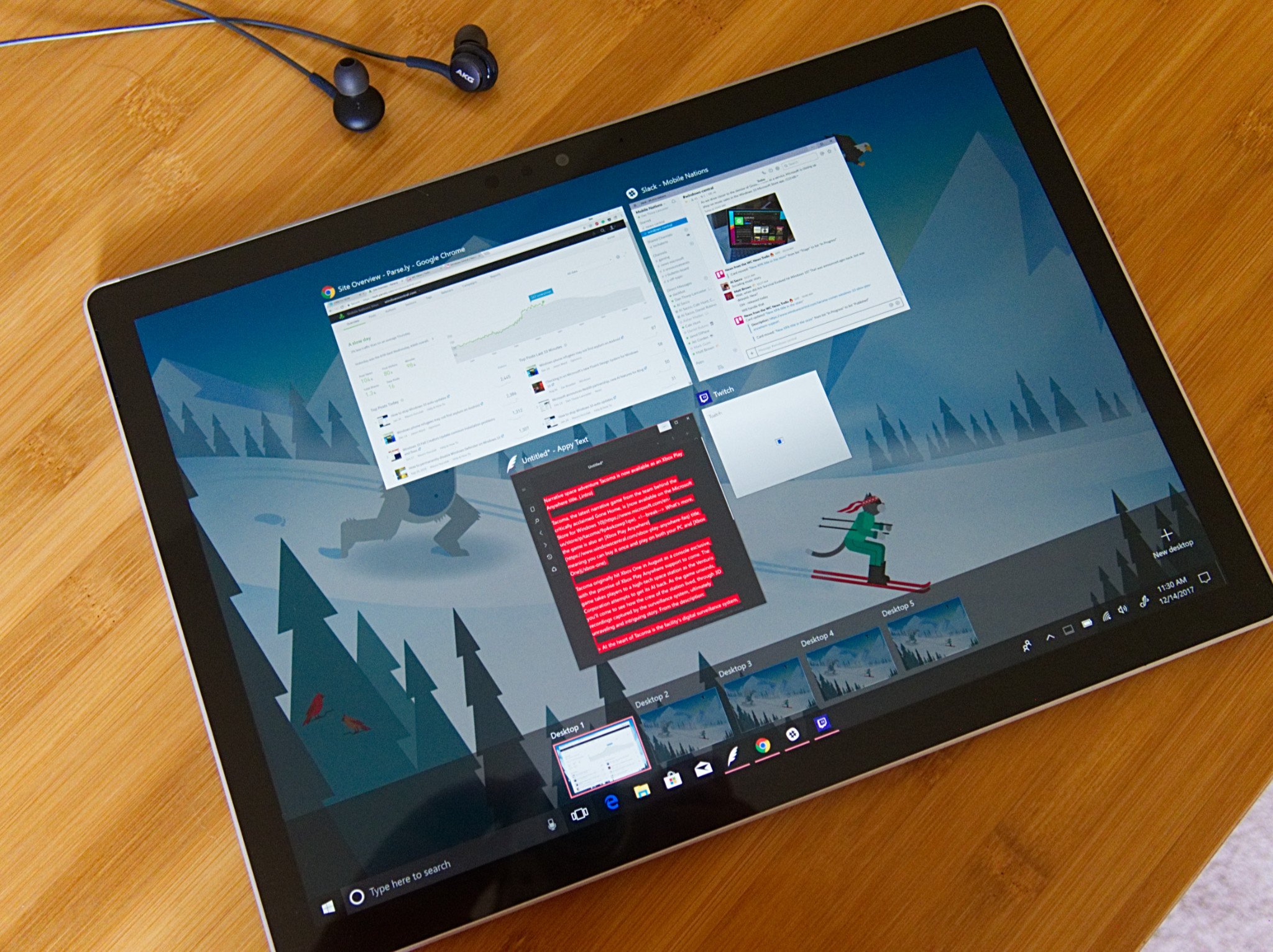
Staying productive is often as much about staying organized as anything else, especially while multitasking. And when it comes to productivity on PCs, many people may opt for a desktop setup with multiple monitors. But that's not an option for everyone – particularly if you do most of your work on the go with a laptop.
Thankfully, Windows 10 includes a pretty handy feature that can mimic the experience of spreading your work around multiple monitors without the extra hardware: virtual desktops.
Virtual desktops essentially let you multiply the number of distinct desktops you have at your fingertips on one PC. This can come in handy if you just want to keep work tasks separated from your personal windows. But if fostering focus is your goal, you can get granular by, for example, dedicating one desktop to your image-editing tools, another for coding, and another for communication. This lets you keep things separate and organized while still having access to everything at a click.
How to use Windows virtual desktops
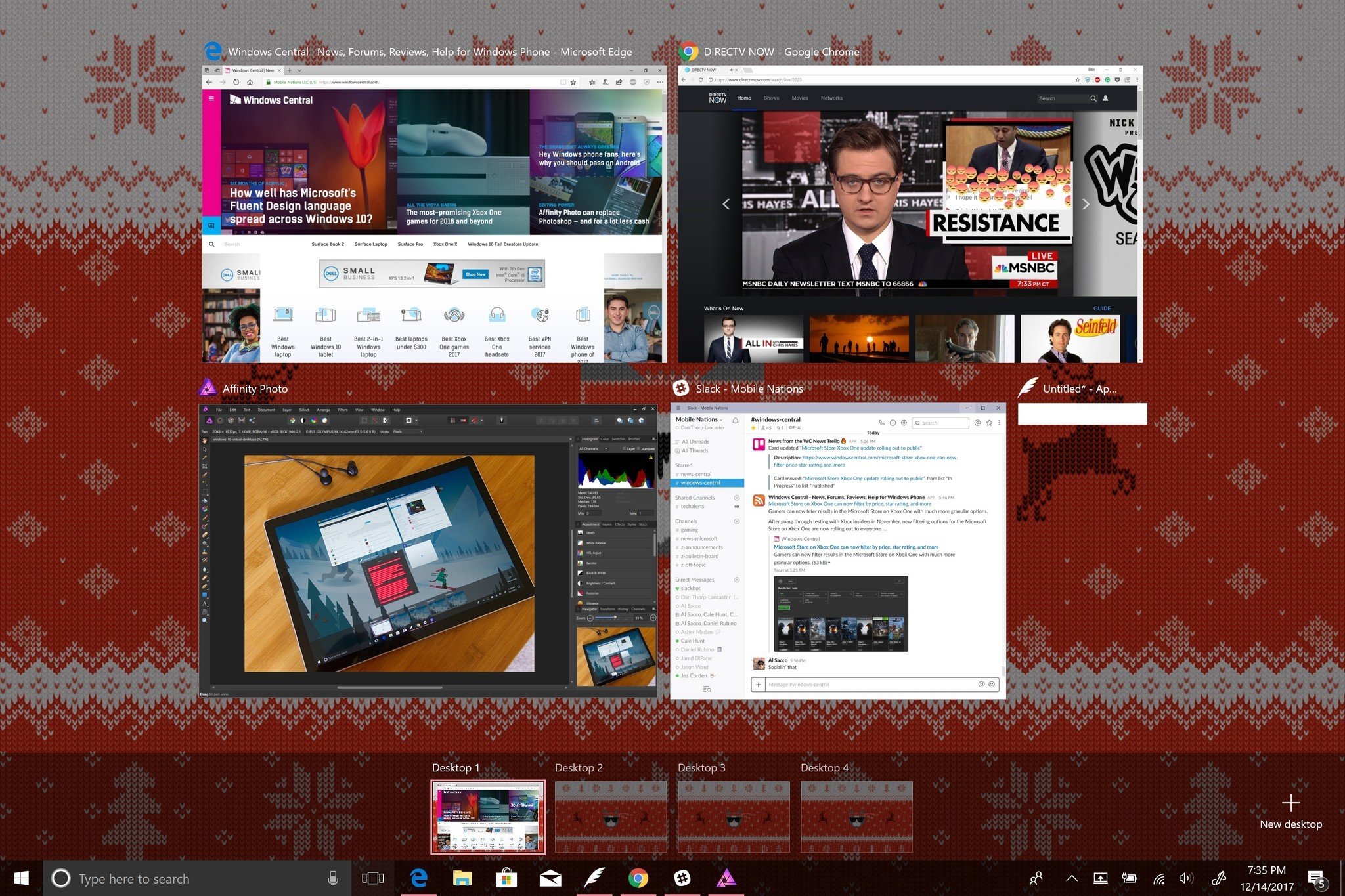
Accessing your virtual desktops is fairly easy, but it's not immediately obvious unless you're looking for it. The most obvious way to get started is through the Task View icon located on your taskbar. You'll find it located to the right of the Cortana search bar; it looks like a rectangle flanked by two other, partial rectangles. Click the Task View icon and you'll be greeted with a screen that shows all of your currently open apps. This is essentially a birds-eye view of your first, primary desktop, which can be quite an asset if you lost a window and need to find it without too much hassle.

Task View is handy in and of itself, but we're here specifically as a gateway to opening up more desktops. On the bottom right-hand corner of the Task View screen, you'll find a "+" icon that says "New Desktop" underneath. Simply click the button and Windows 10 will surface a bar at the bottom of your screen showing your original, primary desktop and your newly created one. You can keep tapping or clicking the "New Desktop" button to add as many as you want (or, more realistically, as many as your PC can handle).
Switching between desktops is as easy as selecting one from the Task View screen. You can also drag and drop specific programs from Task View on one desktop to the others listed on the screen. And when you're done with a desktop, you can close out of it by hovering over it with your mouse and clicking the "X" button within Task View.
Getting around quickly with keyboard shortcuts
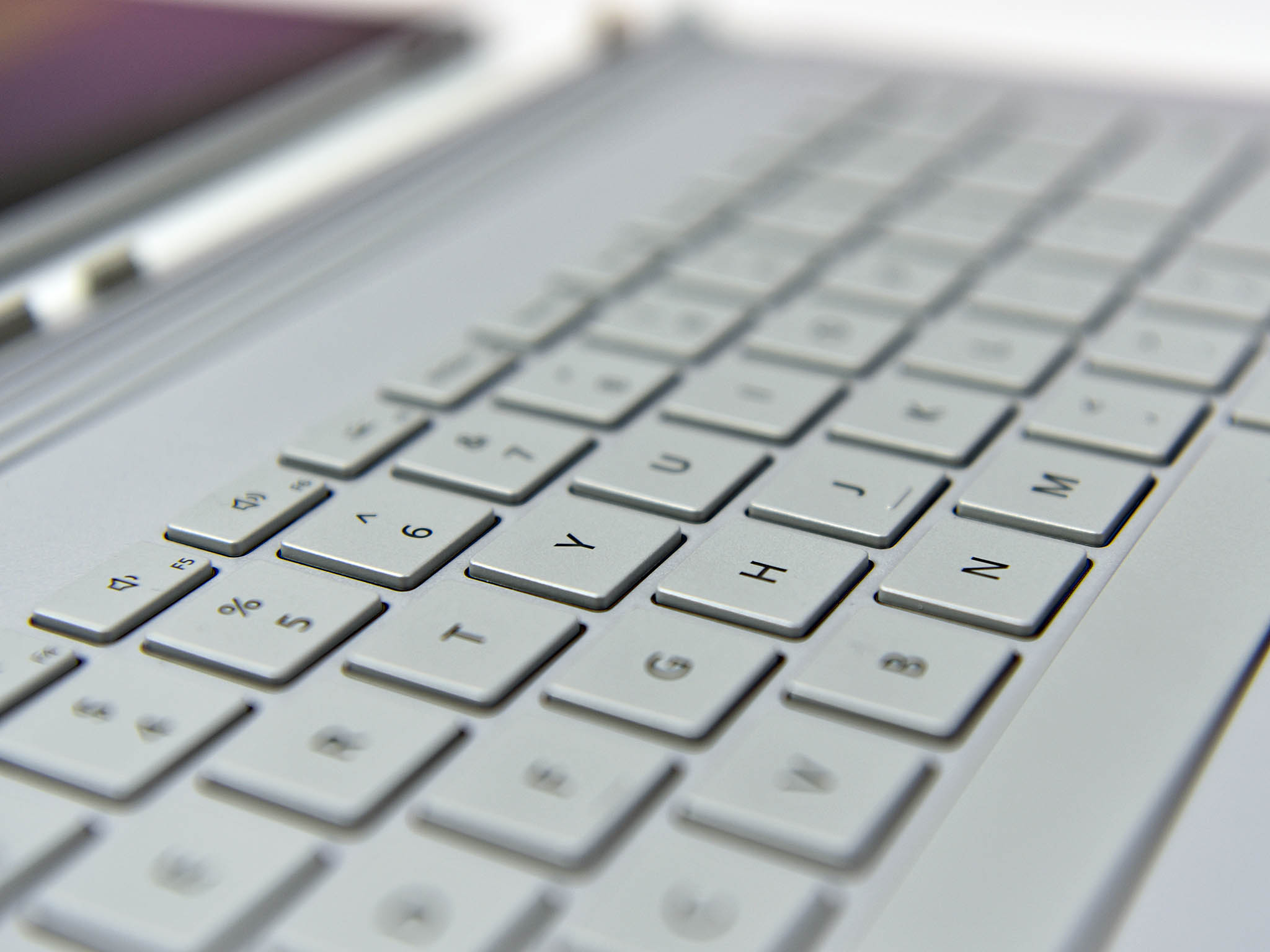
Of course, while the steps described above are fine for getting started, you'll want to move around more quickly as you get used to things. Fortunately, there are some keyboard shortcuts associated with virtual desktops that can speed things up.
Get the Windows Central Newsletter
All the latest news, reviews, and guides for Windows and Xbox diehards.
- To quickly access Task View, you can forego clicking the taskbar icon and use the Windows key + Tab shortcut.
- If you want to move even faster, you don't even have to go into Task View to add a new desktop. Instead, you can create a new desktop by using the Windows key + Ctrl + D shortcut.
- Deleting a desktop you're currently in is just as quick with the Windows key + Ctrl + F4 shortcut.
- Finally, pros can quickly zoom between virtual desktops they've created by holding Windows key + Ctrl and pressing either the left or right arrow keys.
Getting used to the keyboard shortcuts can take some time, but you can think of clicking around Task View as a set of training wheels until you've got the shortcuts down pat. Once you do, you'll find yourself zipping through things at the speed of light.
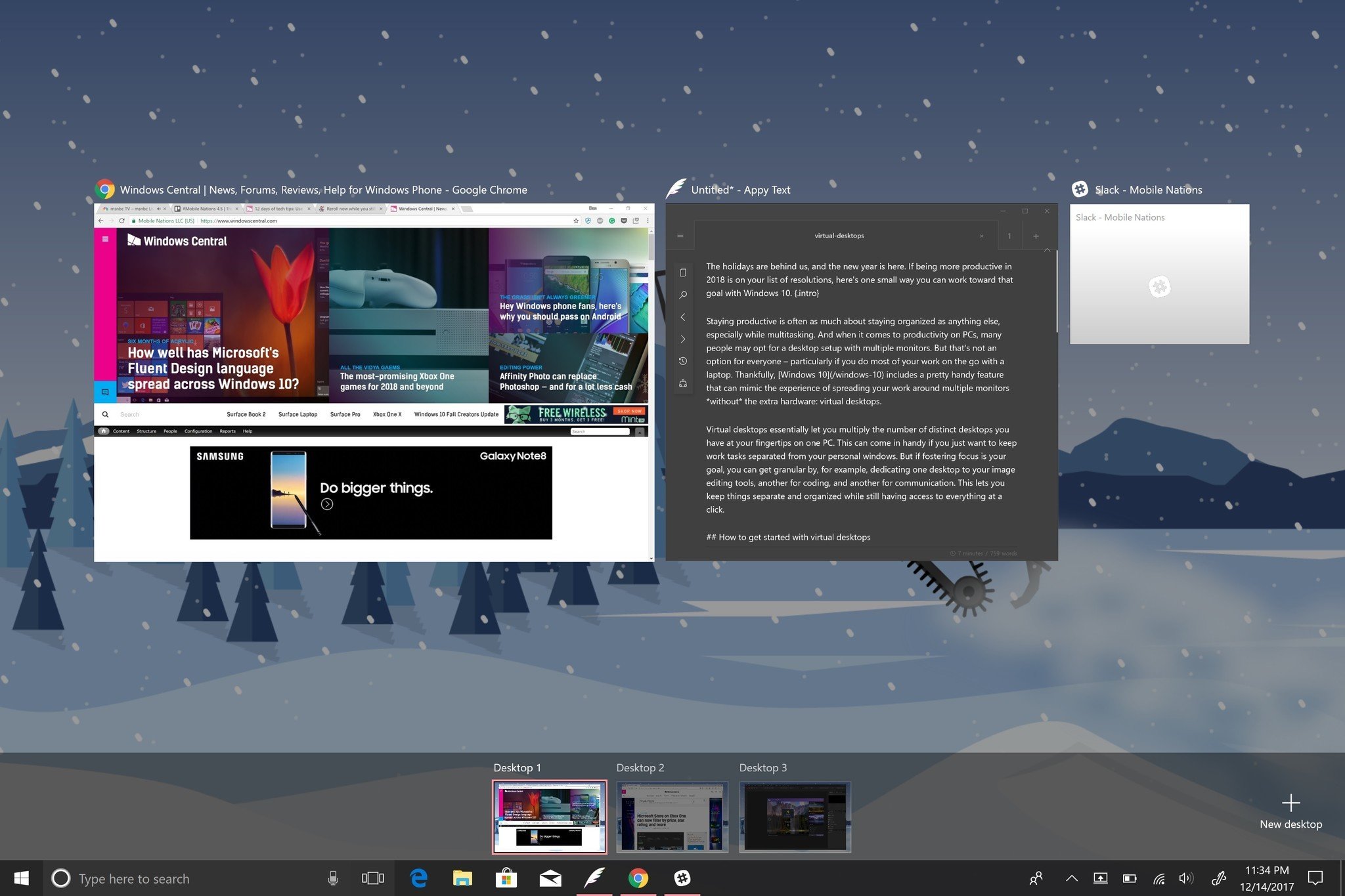
Sure, unlike a setup with multiple monitors, you can't keep an eye on everything at once; you're restricted to viewing one desktop at a time. However, the upshot is that it makes it that much easier to quickly tuck away your personal chats and solitaire windows when the boss is around and you're supposed to be "working." And even if you have multiple monitors, you can look at virtual desktops as a way to add even more screen real estate.
What's not to love about that? We hope your holidays and the upcoming New Year are as productive, and as organized, as possible.
Dan Thorp-Lancaster is the former Editor-in-Chief of Windows Central. He began working with Windows Central, Android Central, and iMore as a news writer in 2014 and is obsessed with tech of all sorts. You can follow Dan on Twitter @DthorpL and Instagram @heyitsdtl.

